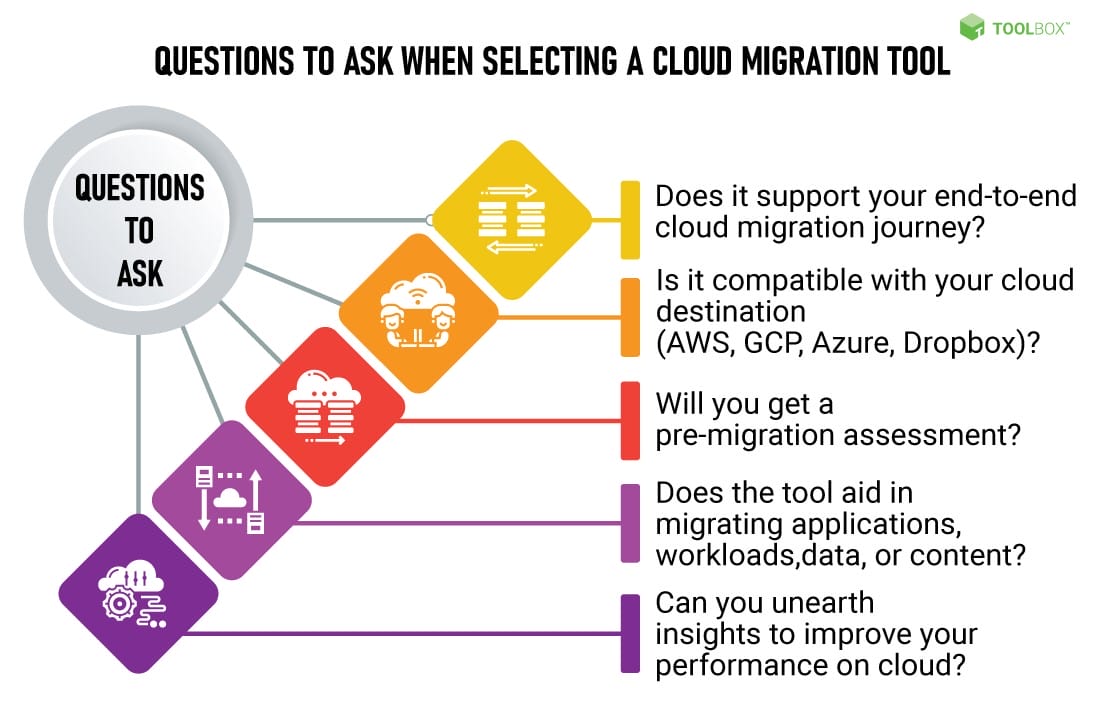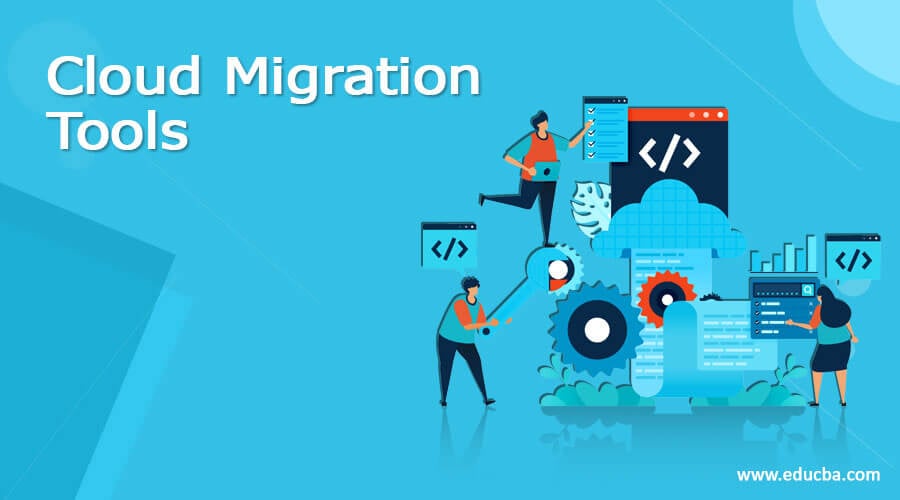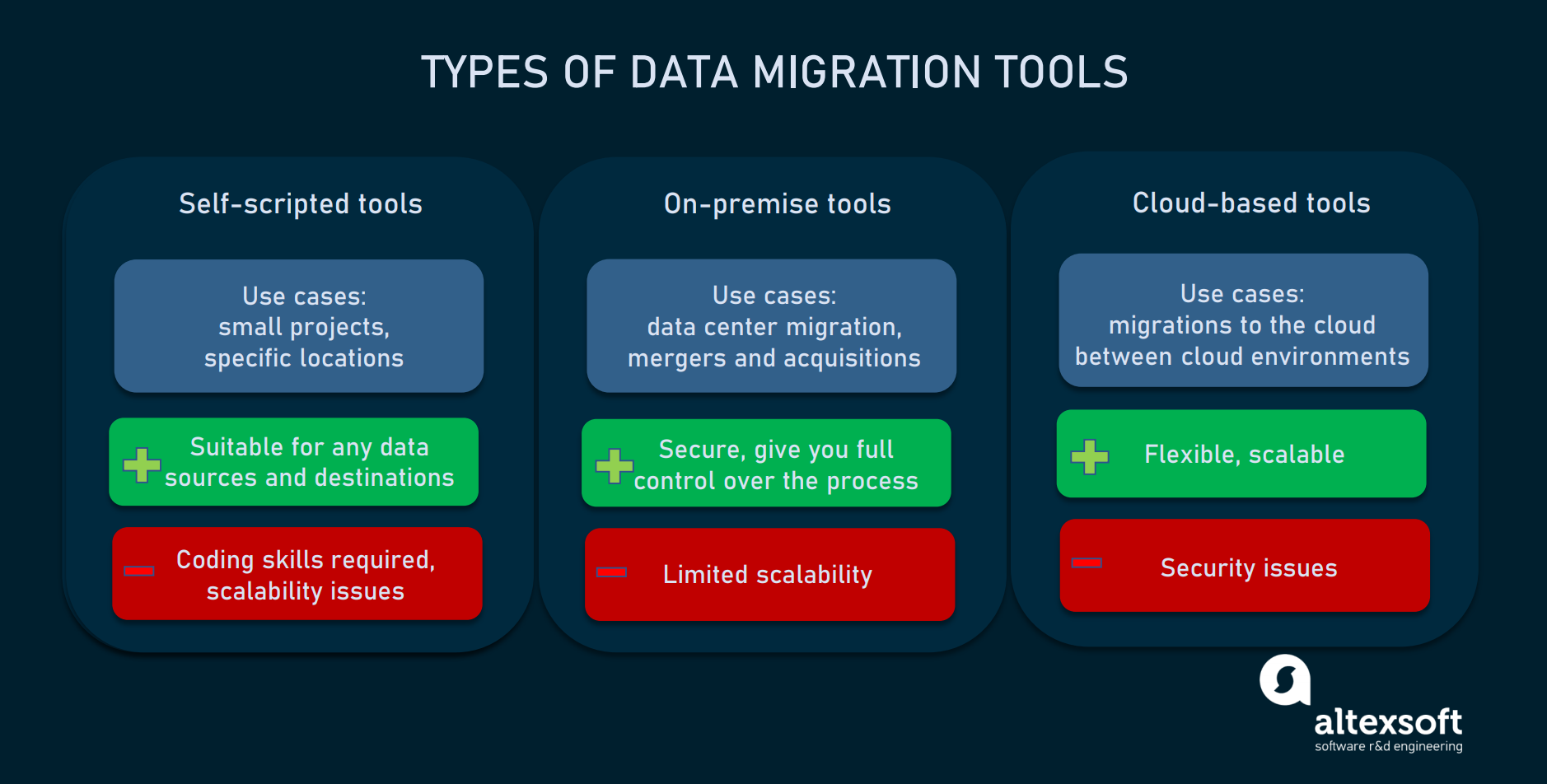
Data and Cloud Migration Software facilitates the transfer of data, applications, and workloads from on-premises infrastructure to cloud environments. It ensures seamless, secure, and efficient transitions.
Data and Cloud Migration Software is essential for businesses seeking digital transformation. This software helps migrate data from legacy systems to modern cloud platforms. It ensures data integrity and minimizes downtime during the migration process. Companies benefit from enhanced scalability, cost savings, and improved performance.
The software supports various cloud providers like AWS, Azure, and Google Cloud. It also offers features like data encryption, real-time monitoring, and automated workflows. Effective migration strategies help businesses stay competitive in today’s fast-paced digital landscape. Investing in reliable migration software is crucial for a smooth transition to the cloud.

Introduction To Data And Cloud Migration
Data and cloud migration software is essential in today’s digital world. Companies need to move data from one place to another. This is where data and cloud migration come into play.
Definition And Importance
Data migration involves transferring data between storage types or systems. It ensures data is accessible and usable in new environments.
Cloud migration is moving digital assets to cloud computing environments. It includes transferring data, applications, and workloads to cloud platforms.
Migration is crucial for several reasons:
- It helps in upgrading systems without data loss.
- It enables better storage solutions.
- It improves system performance and scalability.
- It ensures data security and compliance.
Benefits Of Migration
There are many benefits to using data and cloud migration software:
- Cost Efficiency: Cloud storage reduces physical storage costs.
- Scalability: Easily scale resources as your business grows.
- Accessibility: Access data from anywhere with an internet connection.
- Disaster Recovery: Ensure data is backed up and recoverable.
- Performance: Improved performance with optimized cloud solutions.
These benefits help businesses operate smoothly and efficiently.
Types Of Data Migration
Data migration is the process of transferring data between storage types, formats, or systems. It’s crucial for organizations updating systems, consolidating data, or moving to the cloud. Understanding the types of data migration can help streamline this complex process.
Storage Migration
Storage migration involves moving data from one storage system to another. This could be from older hardware to newer models or from on-premise storage to the cloud.
- Improves performance and scalability
- Reduces costs with more efficient storage
- Enhances data security and reliability
Storage migration is essential for maintaining the integrity and availability of data.
Database Migration
Database migration involves transferring data between different database systems. This process often includes changing the data’s format and structure.
- Migrating from SQL databases to NoSQL databases
- Moving data to a cloud-based database service
- Upgrading to a new version of the same database
Database migration improves data management, accessibility, and performance.
Application Migration
Application migration involves moving software applications from one environment to another. This could mean moving from on-premise to the cloud or from one cloud provider to another.
| Benefits | Details |
|---|---|
| Increased Flexibility | Easier to scale and adapt to changing needs |
| Reduced Costs | Lower maintenance and infrastructure expenses |
| Improved Performance | Optimized for the target environment |
Application migration is vital for upgrading and optimizing business operations.
Types Of Cloud Migration
Cloud migration involves moving data, applications, and other business elements to a cloud computing environment. Understanding the different types of cloud migration is crucial for a successful transition. Here, we discuss three main types: Rehosting, Refactoring, and Replatforming.
Rehosting
Rehosting is also known as “lift and shift.” It involves moving applications from on-premises to the cloud without changes. This method is fast and requires minimal effort. It suits companies with tight deadlines or limited budgets.
Here are some key benefits of rehosting:
- Quick migration
- Low initial cost
- Minimal changes to existing applications
Rehosting is ideal for businesses starting their cloud journey. It allows them to quickly gain cloud benefits.
Refactoring
Refactoring involves redesigning applications to better fit the cloud environment. This method offers greater scalability and performance. It requires more time and resources compared to rehosting.
Consider these advantages of refactoring:
- Improved scalability
- Enhanced performance
- Better resource utilization
Refactoring is suitable for companies seeking long-term cloud benefits. It provides a tailored solution for cloud optimization.
Replatforming
Replatforming, or “lift and reshape,” involves making minimal changes to optimize for the cloud. It offers a balance between rehosting and refactoring. This method helps improve efficiency without a complete overhaul.
Check out these benefits of replatforming:
- Moderate changes for better performance
- Faster than refactoring
- Cost-effective
Replatforming is perfect for businesses wanting to improve cloud performance. It requires fewer changes than refactoring.
Key Features Of Migration Software
Data and cloud migration software helps move data smoothly and safely. It has many features that make the process easier and more secure. Below are some key features of migration software.
Automation Capabilities
Automation makes migration faster and reduces errors. Most migration tools have automated workflows. These workflows handle repetitive tasks. This saves time and ensures accuracy.
Automation features include:
- Scheduling migrations
- Auto-detecting data types
- Automated error handling
Security And Compliance
Security is crucial during data migration. Migration software must protect data from threats. It should comply with industry standards and regulations.
Key security features include:
- Data encryption
- Access controls
- Compliance checks
These features ensure your data stays safe during migration.
Scalability
Scalability allows the software to handle large data volumes. It ensures the software works well as your data grows. This is important for businesses of all sizes.
Scalability features include:
- Flexible storage options
- High data transfer speeds
- Support for multiple data sources
These features help the software grow with your needs.
Popular Data Migration Tools
Data migration can be overwhelming without the right tools. Fortunately, many popular data migration tools simplify this process. These tools help transfer data between different storage types, formats, or systems.
Features And Pricing
| Tool | Features | Pricing |
|---|---|---|
| Azure Data Factory |
|
Pay-as-you-go |
| Apache Nifi |
|
Free, Open Source |
| Talend |
|
Subscription-based |
Pros And Cons
Azure Data Factory
- Pros:
- Scalable solution
- Pay only for what you use
- Integrates with Microsoft services
- Cons:
- Complex for beginners
- Requires Azure knowledge
Apache Nifi
- Pros:
- Free and open source
- Easy-to-use interface
- Strong community support
- Cons:
- Limited cloud integration
- Requires manual scaling
Talend
- Pros:
- Comprehensive data tools
- Supports various data sources
- Strong user community
- Cons:
- Subscription costs
- Steep learning curve
Top Cloud Migration Tools
Cloud migration tools help businesses move their data and applications to the cloud. These tools simplify the process, ensuring a smooth transition. Each tool offers different features and pricing options to fit various needs.
Features And Pricing
The features of cloud migration tools are crucial. They determine how well the migration goes. Pricing varies, so choose wisely based on your budget and needs.
| Tool | Features | Pricing |
|---|---|---|
| AWS Migration Hub |
|
Free |
| Google Cloud Migrate |
|
Pay-as-you-go |
| Azure Migrate |
|
Free |
Pros And Cons
Each cloud migration tool has its pros and cons. Evaluating these can help in making the right choice.
- AWS Migration Hub:
- Pros: Free, integrates well with AWS services, central tracking.
- Cons: Limited to AWS ecosystem, learning curve.
- Google Cloud Migrate:
- Pros: Automated, supports multiple OS, real-time replication.
- Cons: Pay-as-you-go can be costly, limited to Google Cloud.
- Azure Migrate:
- Pros: Free, comprehensive, cost estimation feature.
- Cons: Limited to Azure, complexity for beginners.
Challenges In Data And Cloud Migration
Data and cloud migration can be complex. It involves moving data from one environment to another. This process has several challenges. Understanding these challenges is crucial for a successful migration.
Data Integrity
Maintaining data integrity is essential during migration. Data integrity means ensuring data is accurate and consistent. Any loss or corruption of data can lead to significant issues.
Here are a few ways to ensure data integrity:
- Use robust error-checking mechanisms.
- Perform regular data validation.
- Implement backup solutions to prevent data loss.
Downtime Issues
Downtime during migration can impact business operations. It’s important to minimize downtime to reduce disruptions. Planning and scheduling the migration carefully can help manage this issue.
Consider the following strategies:
- Schedule migrations during off-peak hours.
- Use incremental migration to avoid full system shutdowns.
- Have a contingency plan in case of unexpected issues.
Cost Management
Migration can be costly. Effective cost management is crucial to stay within budget. Unplanned expenses can arise, making it important to monitor costs closely.
Here are some tips for managing costs:
- Create a detailed budget for the migration process.
- Use cost-monitoring tools to track expenses.
- Consider cloud provider pricing models to find the best fit.

Best Practices For Successful Migration
Data and cloud migration can be a complex process. To ensure a smooth transition, adopting best practices is crucial. In this section, we will discuss key strategies for successful migration.
Planning And Strategy
Planning is the first step in any migration. Create a detailed roadmap. Define the scope, goals, and timeline. Identify the data to be moved and its dependencies. Assign roles and responsibilities. Ensure all stakeholders are informed and engaged.
Implement a risk management plan. Identify potential risks and mitigation strategies. Use a project management tool to track progress. Regularly update the plan to reflect any changes.
Testing And Validation
Testing is crucial for a successful migration. Perform data validation to ensure data integrity. Use automated testing tools for efficiency. Conduct end-to-end testing to verify the system’s functionality.
- Unit Testing: Test individual components for errors.
- Integration Testing: Ensure components work together.
- Performance Testing: Check system performance under load.
- User Acceptance Testing (UAT): Validate with end-users.
Document all test results and fix any issues. Repeat testing until results are satisfactory.
Post-migration Review
After migration, conduct a thorough review. Verify data accuracy and system functionality. Compare pre-migration and post-migration states.
Gather feedback from users and stakeholders. Identify any issues or areas for improvement. Document lessons learned for future reference.
| Activity | Description |
|---|---|
| Data Verification | Check data integrity and accuracy. |
| System Performance | Evaluate system performance and efficiency. |
| User Feedback | Collect feedback from end-users. |
| Issue Identification | Identify and resolve any issues. |
Regularly monitor the system post-migration to ensure stability. Make necessary adjustments to improve performance.
Future Trends In Data And Cloud Migration
Data and cloud migration are evolving rapidly. These changes bring new opportunities. Companies must stay updated to leverage these trends.
Ai And Automation
Artificial Intelligence (AI) is transforming data migration. Automation tools simplify complex tasks. They reduce errors and save time.
AI algorithms can predict issues before they arise. This ensures smoother migrations. It also enhances data security.
Automation handles repetitive tasks. This frees up human resources for strategic roles. Automated workflows accelerate the migration process.
Hybrid Cloud Solutions
Hybrid cloud solutions are gaining popularity. They combine private and public clouds. This offers flexibility and scalability.
Data can be stored in multiple locations. This ensures better accessibility. Hybrid clouds also offer enhanced security measures.
A table of benefits of hybrid cloud solutions:
| Benefit | Description |
|---|---|
| Flexibility | Combines private and public clouds for better options. |
| Scalability | Resources can be scaled up or down as needed. |
| Cost-Efficiency | Optimizes costs by balancing workloads. |
| Security | Offers advanced security features for data protection. |
Businesses can balance workload and cost. Hybrid solutions adapt to changing needs. This makes them future-proof.

Frequently Asked Questions
What Is Data Migration Software?
Data migration software helps transfer data between storage systems. It ensures data integrity and minimizes downtime.
How Does Cloud Migration Software Work?
Cloud migration software automates the transfer of data and applications to cloud platforms. It ensures security and efficiency.
Why Use Data And Cloud Migration Software?
Using migration software reduces manual errors, ensures data integrity, and speeds up the migration process.
What Are Key Features Of Migration Software?
Key features include automation, data integrity checks, security protocols, and compatibility with various platforms.
Data and cloud migration software is essential for modern businesses. It ensures smooth transitions and minimizes disruptions. Investing in reliable migration tools can enhance efficiency and security. By understanding its importance, companies can stay competitive. Make the right choice and streamline your migration process today.






